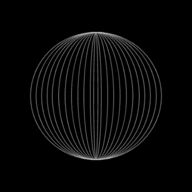Electromagnetic Spectrum

In the year 1860, a Scottish physicist James Clerk Maxwell proved that light was a mixture of electromagnetic waves.
This meant that there were many more electromagnetic waves beyond infrared or ultraviolet.
Soon in the early years of the 20th century, physicists had discovered or artificially produced several other types of electromagnetic waves.
This completed the electromagnetic spectrum.
The speed of electromagnetic waves
Maxwell had predicted that all electromagnetic waves will have the same speed through empty space (vacuum).
This prediction came true and it has been found that all waves in the electromagnetic spectrum have the same speed in vacuum.
Electromagnetic waves travel at a speed of about 300,000,000 m/s (meters per second) or 3 x 108 m/s through vacuum.
This is extremely close to the speed of light. Like light, the speed of electromagnetic waves depends upon the substance through which they are travelling.
Wavelength and frequency

All electromagnetic waves have different wavelengths and frequencies.
For example:
- Red light has a greater wavelength than violet light (700 nm)
- Violet light has a greater frequency than red light (400 nm)
| Electromagnetic Wave | Use |
|---|---|
| Radio waves | - Used to broadcast radio signals |
| Microwaves | - Used in satellite television broadcasting - Transmitting mobile phone signals between masts |
| Infrared waves | - Used in remote controls for devices like TVs and air conditioners - Used in grills, toasters, and burglar alarm systems |
| X-Rays | - Used in security scanners at airports - Used in hospitals and clinics to see inside patients' bodies |
| Gamma rays | - Used in medical diagnosis and detecting faults in pipelines - Used in radiation therapy for cancer treatment - Used in food irradiation and sterilisation - More information available in guides on radioactivity |
Electromagnetic hazards

Though electromagnetic waves have a smorgasbord of uses, they also have some hazards that need to be taken into consideration.
All types of radiation can be hazardous including bright light which can blind our eyes!
Microwaves are used to warm food in ovens; care must be taken and they must be checked in order to confirm that they don’t have any radiation leaking out of them.
Telephone engineers must take care by ensuring they aren’t exposed by too much of microwaves while working on telephone masts of a mobile phone network.
Even the people working with X-Rays must be very cautious to minimise their exposure towards X-Rays while a patient is being examined. This can be done by maintaining a long proximity with the X-Ray source.
Analogue and digital signals
There are two main types of signals:
- Analogue
- Digital
In analogue signals, the voltage or current can be any value within a range — like a smooth curve that changes continuously.
In digital signals, the voltage can be only two values — either high (1) or low (0), like an on/off switch.
This is the end of this guide. Hope you enjoyed it! Thanks for using igcsepro.org! We hope you will give us a chance to serve you again!

